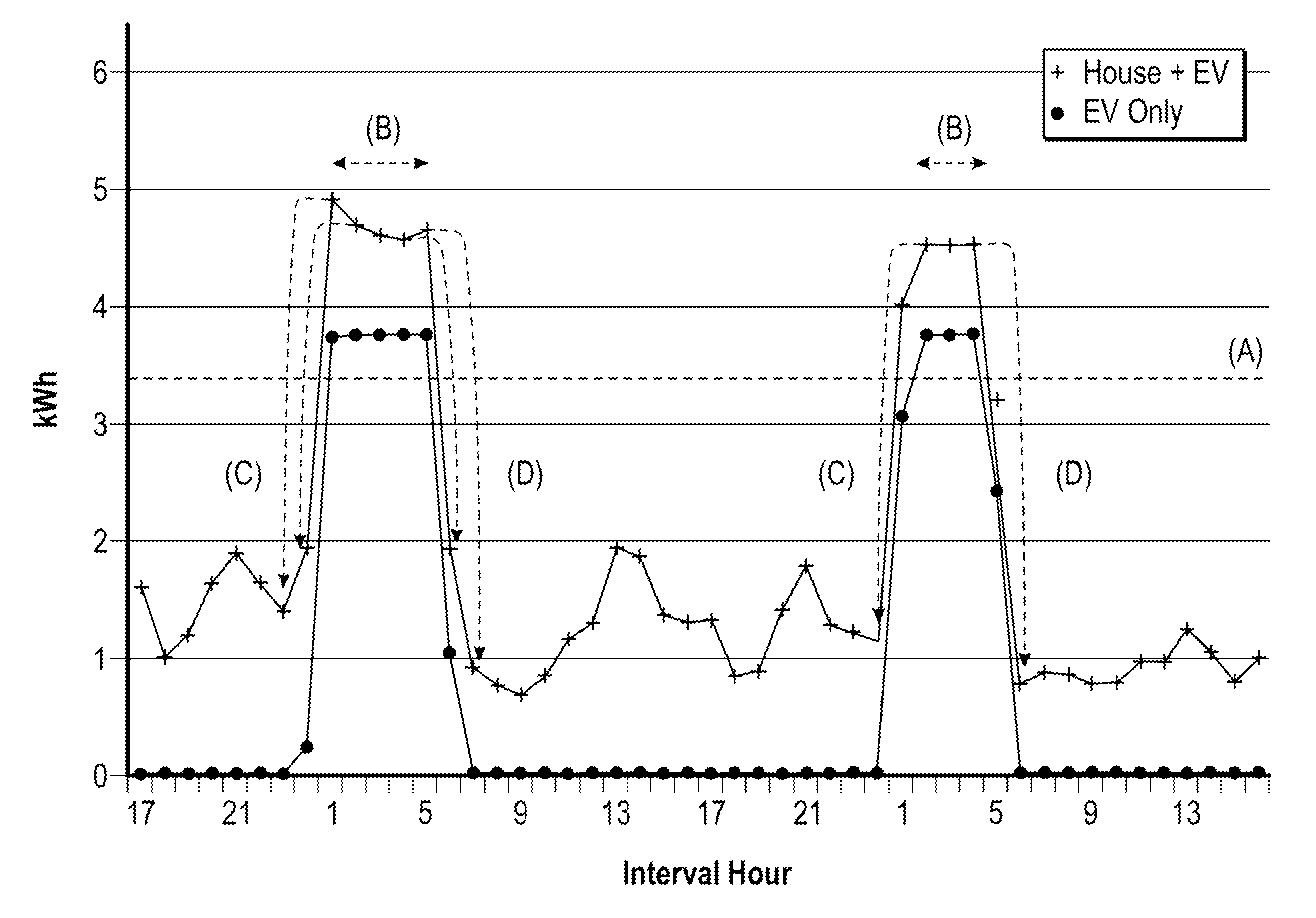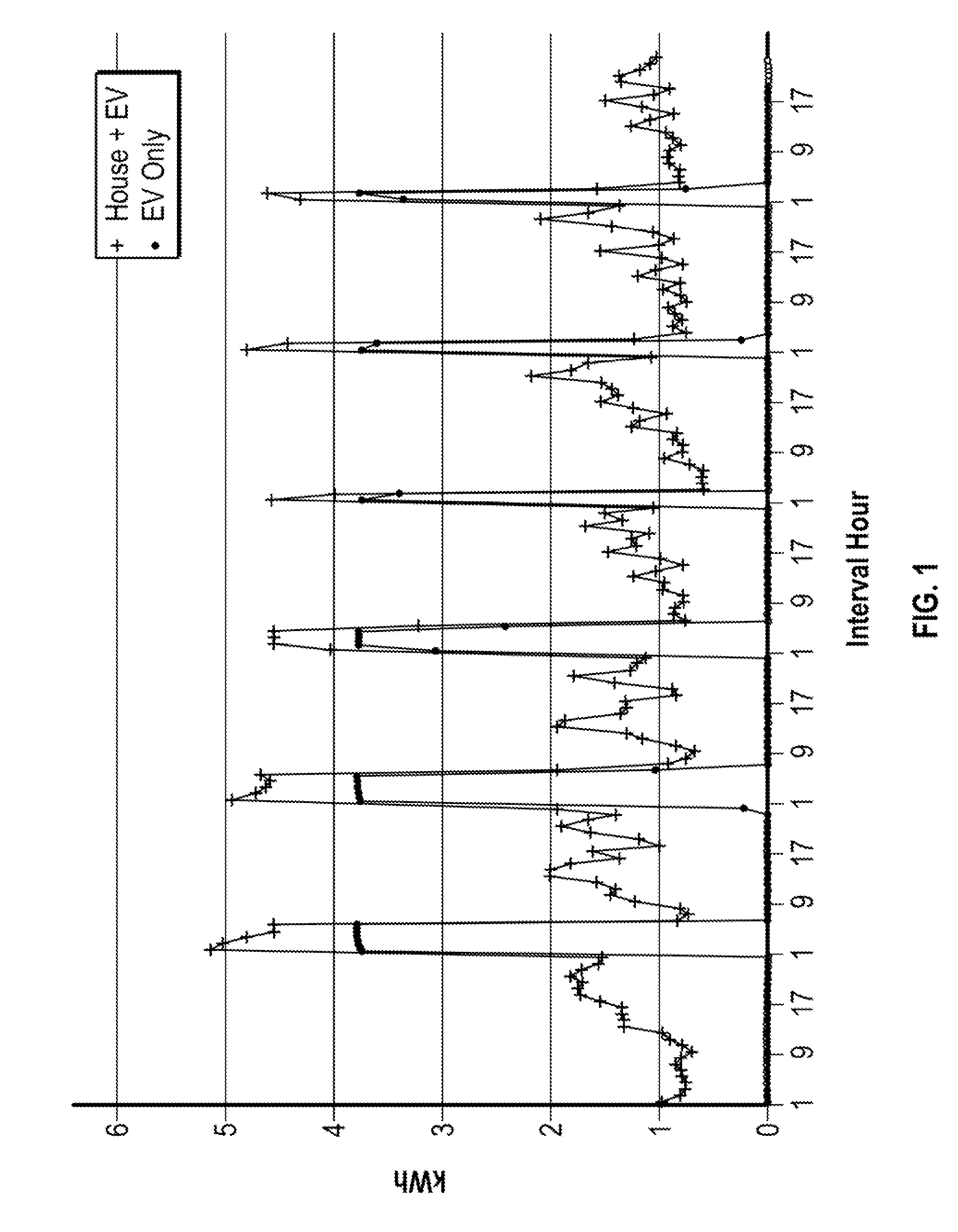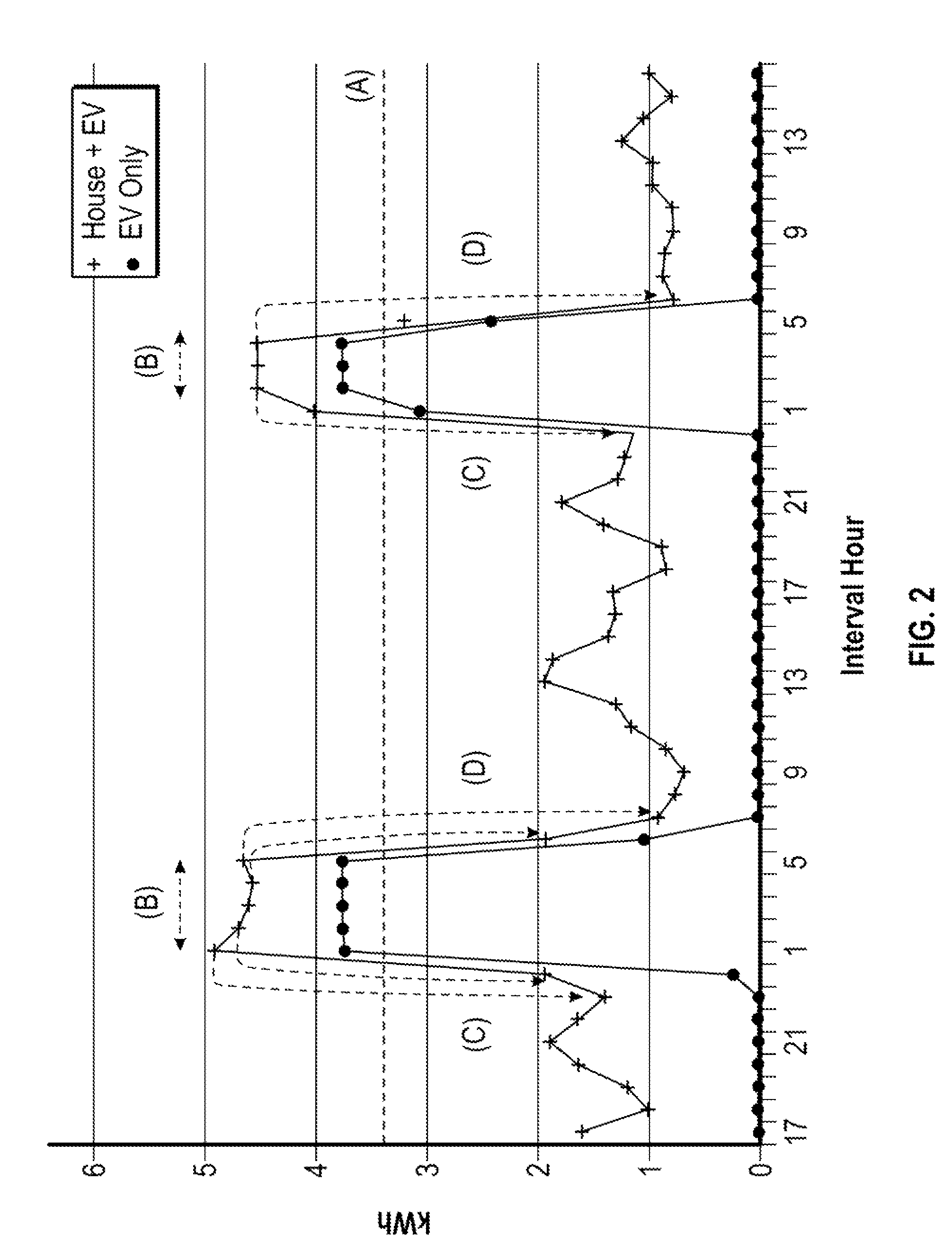Method for detection of plug-in electric vehicle charging via interrogation of smart meter data
a plug-in electric vehicle and smart meter technology, applied in the direction of electric devices, instruments, transportation and packaging, etc., can solve the problems of transformers at risk of being seriously overloaded, the risk of multiple pevs clustered on a single transformer will increase that risk, and the risk of transformers being exposed to multiple pevs, etc., to improve the accuracy of real-time monitoring, the effect of faster charging and higher sampling rates
- Summary
- Abstract
- Description
- Claims
- Application Information
AI Technical Summary
Benefits of technology
Problems solved by technology
Method used
Image
Examples
Embodiment Construction
[0006]The present invention is directed toward an algorithm that employs a specific logic structure to interrogate interval consumption data. In most utilities having an Advanced Metering Infrastructure (AMI), meter data is reported in either 15-minute or hourly intervals, and only kWh information is transmitted. Future versions of meter technology may allow for more densely sampled time intervals or other data such as voltage and current. Relying strictly on hourly interval reads and kWh data, the algorithm set forth herein scans through real-time or archival data sets to identify load signatures indicative of electric vehicle charging.
[0007]The algorithm relies on four parameters to identify charging events: 1) a threshold level of total kWh consumption; 2) a defined duration at which kWh consumption remains above this threshold; 3) a leading edge increase in kWh consumption; and 4) a lagging edge decrease in kWh consumption. The specific numeric value for each of these parameters...
PUM
 Login to View More
Login to View More Abstract
Description
Claims
Application Information
 Login to View More
Login to View More - R&D
- Intellectual Property
- Life Sciences
- Materials
- Tech Scout
- Unparalleled Data Quality
- Higher Quality Content
- 60% Fewer Hallucinations
Browse by: Latest US Patents, China's latest patents, Technical Efficacy Thesaurus, Application Domain, Technology Topic, Popular Technical Reports.
© 2025 PatSnap. All rights reserved.Legal|Privacy policy|Modern Slavery Act Transparency Statement|Sitemap|About US| Contact US: help@patsnap.com



